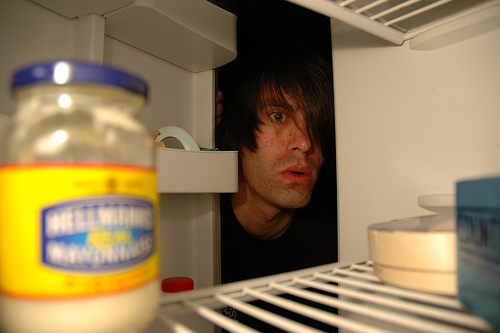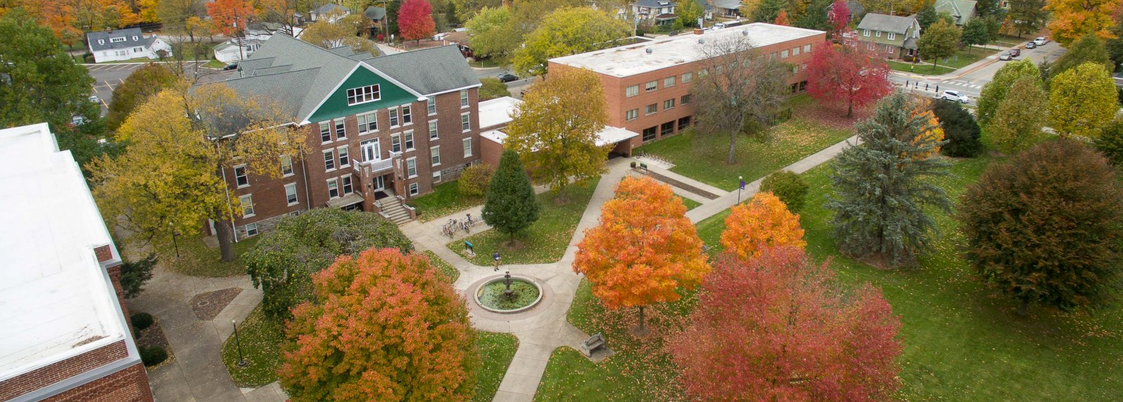Making money...from energy conservation
 This document is available via tiny.cc/payback, or scan the code...
This document is available via tiny.cc/payback, or scan the code...
 You find yourself in an organization. It may be a multinational company. It may be you and your apartment mates. It may be a small rural clinic on SST. It may be the family you grew up in.
You find yourself in an organization. It may be a multinational company. It may be you and your apartment mates. It may be a small rural clinic on SST. It may be the family you grew up in.
You have an idea to help your organization save money or save the environment (= save the world!):
Jay Kulpa
- I think we should switch our corporate fleet (or family vehicle) from traditional car(s) to electric vehicle(s)!
- We should swap out our fluorescent lights for LED lights!
- We should buy a bicycle so our staff nurse, Carlinho, can visit more families each month than he can see on foot!
- We should get a new fridge to replace our old one and save electricity!
The first question you get from your boss / mother / roommates might be...
- How much is this going to cost?
...and "How much can we save?", "Is it going to be worth it?", "Don't you have work to do?"...
Of course, there are also benefits beyond just saving money, such as...
- How much energy would this save?
- How much in the way of carbon emissions would be averted?
- Are there other non-monetary costs or benefits?
Numbers
Businesses have well defined ways of deciding about investments. While we want to take into account more than just the economic costs/benefits in dollars, these ways of figuring costs and expenses can also be used to calculate environmental benefits...
Payback period
 Say that you have an idea for a new machine to create laser-engraved wooden phone cases (carved.com in Elkhart, IN). The laser engraver will cost \$10,000. But then you estimate that it will produce phone cases that will generate a profit of \$4,000 per year in new revenue. How many years will it take until the new revenue pays for the initial cost of the machine?
$$\begineq \text{Payback period (years)}&=\frac{\text{Cost(\$)}}{\text{New yearly income (\$/yr)}}\\
&=\frac{\text{\$}10\,000}{\$4\,000\text{/year}}=10/4 = \color{red}{2.5 \text{ years}}.
\endeq $$
Say that you have an idea for a new machine to create laser-engraved wooden phone cases (carved.com in Elkhart, IN). The laser engraver will cost \$10,000. But then you estimate that it will produce phone cases that will generate a profit of \$4,000 per year in new revenue. How many years will it take until the new revenue pays for the initial cost of the machine?
$$\begineq \text{Payback period (years)}&=\frac{\text{Cost(\$)}}{\text{New yearly income (\$/yr)}}\\
&=\frac{\text{\$}10\,000}{\$4\,000\text{/year}}=10/4 = \color{red}{2.5 \text{ years}}.
\endeq $$
- If your organization has (or can borrow from a bank, or get a grant from a foundation) \$10,000 to spend on a new machine or technology, would you rather invest in a machine that pays that investment back in 1 year or 3 years?
Projects to save energy
 Say that you're considering a new refrigerator in order to save money on electricity. In this case, you are considering spending money for the fridge not to generate new money, but to save money compared to what you're currently doing. We would calculate the payback period.
$$\text{Payback period (years)}=\frac{\text{Cost(\$)}}{\text{Yearly savings(\$/yr)}}.$$
Say that you're considering a new refrigerator in order to save money on electricity. In this case, you are considering spending money for the fridge not to generate new money, but to save money compared to what you're currently doing. We would calculate the payback period.
$$\text{Payback period (years)}=\frac{\text{Cost(\$)}}{\text{Yearly savings(\$/yr)}}.$$
Using menards' website...
- Find the cost, power (watts), lumens (amount of light) and estimated lifetime for a "60 W equivalent" LED lightbulb.
- Find the same information for a "60 W equivalent" compact fluorescent light bulb.
- What is the local cost of electricity from NIPSCO? (In dollars / kWh)
- Find the difference in power consumed between the CFL and the LED.
- Assuming that you're running the bulb 3 hours each day, figure out how much energy (in watt*hours, or kilowatt*hours) you would save in one week if you buy the LED.
- Figure out how much money you save per week, using the local price of electricity.
- Figure out how many weeks it will take for you to save the cost of the LED bulb. This is your payback period.
- Divide the payback period (in weeks) by 52 (weeks in a year) to get the payback period in years.
- The LED costs about \$1.00.
- The 60 W incandescent uses 60 W of power. (But not so for a 60 W "equivalent" CFL.)
- The LED supplies the same amount of light, but using just 9 W of power (wow!)
The difference in power between the incandescent and the LED is (60 W - 9 W)=51 W.
If the light is on for 3 hours each day, Then each day I'm saving this much energy: $$ \text{51 W (savings)}\cdot\frac{\text{3 hours}}{\text{day}}=153\, \text{(W$\cdot$h)/day}.$$
Now, if I keep the light on for 3 hours each day, every day out of the week, The LED will save me: $$ \frac{\text{153 W h}}{\text{day}}\frac{\text{7 days}}{\text{week}}\frac{\text{1 kW}}{\text{1000 W}}= \frac{\text{1.07 kWh}}{\text{week}} $$
The retail cost (cost to home users) of NIPSCO electricity is about 12 cents per kilowatt hour.
The savings per week are: $$\frac{\text{1.07 kWh}}{\text{week}}\frac{\text{\$0.12}}{\text{1 kWh}}= \frac{\text{\$0.128}}{\text{week}}.$$ The total number of weeks until I pay off the cost of the LED is: $$ \text{Total cost(\$1.00)}\frac{\text{1 week}}{\text{\$0.128 saved}}= \text{7.8 weeks}$$ And in years... $$\text{7.8 weeks}\frac{\text{1 yr}}{\text{52 weeks}}=\text{0.15 years}.$$
What do "typical" companies expect?
Bob Bechtold gave a presentation Ending the Tyranny of 2-year Payback [from HARBEC plastics, speaking at the 2015 U.S. Department of Energy "Better Buildings Summit"]. He claims that:
- Most Fortune 500 companies expect a 1-2 year payback period for capital projects.
- Banks expect to see a 2 to 3 year payback to approve loans to smaller businesses.
- *But* Bob argues that projects that save energy should be judged less harshly:
- If people's tastes change, they may no longer be interested in laser engraved phone cases and the machine (even if it is in good shape) may stop generating revenue. But revenue from energy savings are "locked in" and do not depend on consumer preferences staying the same.
- Energy savings might become even *more* valuable in the future if energy prices go up.
Find:- A typical payback period for a residential solar installation.
- A typical lifetime for a residential solar installation.
Essential research skill #1
Find text in a long web page or long .pdf:
- ctrl+f (Windows)
- ⌘+f (Mac)
The National Renewable Energy Laboratory is a Department of Energy lab with some of the best, most up to date information, both technical and economic. Their webservers all end in nrel.gov
Essential research skill #2
Search on a particular 'domain'
Using google, enter your search terms, and then add (for example to search across all of MIT's servers) +site:mit.eduGlenn Gilbert says that for LEDs, "The carbon payback is instant!"
Refrigerator Payback Assignment
Imagine that you are renting an apartment with some friends, and you are responsible for paying your electricity bill.
You hear that the refrigerator is the home appliance that typically consumes the most energy for households, and wonder about replacing yours.
In small groups
- The government's Energy Star program rates home appliances according to how much they would cost to operate for "typical" usage. They have a tool to calculate the yearly cost of operation of older refrigerators. Pick a typical, 1980's era refrigerator. Use NIPSCO's residential rate of \$0.122 per kWh as the cost of electricity. Record what "type" of refrigerator you choose, and find the annual cost of operation, and the annual kWh of energy used.
A 21.5-24.4 cubic foot fridge with "French" doors (side-by-side) doors was estimated to have an annual operating cost of \$300.81 (That is, \$300.81 / yr).
- Go shopping! Around here you might buy a new refrigerator at Lowe's or another big box store. Search their offerings for a not-too-expensive model. Record the cost of the new refrigerator.
A new Whirlpool french door fridge from Lowes costs \$1299
 Still on the Lowe's page,
look for the
Still on the Lowe's page,
look for the  picture.
The Energy Guide will give you an estimated cost based on national average utility rates. But you should calculate the annual cost using that NIPSCO rate of \$0.122 per kWh.
picture.
The Energy Guide will give you an estimated cost based on national average utility rates. But you should calculate the annual cost using that NIPSCO rate of \$0.122 per kWh.
That same model claimed operating costs of \$74/year
- Calculate your annual savings (in \$ per year).
Annual savings would be \$301/yr - \$74/yr = \$227/yr.
- Using the cost of the new fridge, what is the payback period?
Payback period is (\$ cost of the new fridge)/(\$/yr annual savings in operating costs) =\$1299 / \$227/yr = 4.7 years.
- What is the effective annual % return on your energy-saving investment?
annual % return = 100% / (payback period in years) = 100/4.7 = 21.3 %/year. If you keep the fridge for 10 years, your total avings would be 10 years * \$277/year = \$2770. The initial cost of the fridge was \$1299, so you would have *made* \$2770-\$1299 = \$1471 (!)
- Based on this payback period, do you think it would be worth buying? Why or why not?
Many of you pointed out that you might stay in an apartment for only 1-3 years. By this time you haven't paid back the initial cost of your investment.
- If this fridge actually saves a "significant" amount of energy but your payback period is too long...how might you change the social circumstances that you assumed?
Is there any change that could make this a more attractive investment?
Some creative options y'all pointed out:
- You could buy a cheaper fridge: This could be a different model (the ones with French doors are more expensive than a traditional fridge with the same size), or a smaller refrigerator, so that your upfront costs would be less. This would shorten the payback period.
- You could split the cost with one or more roommates: That doesn't decrease the payback period, but it does mean that your personal cost is less.
- You could sell the old fridge to reduce the up-front cost.
- You could sell the *new* fridge to the next tenants when you leave your apartment.
- You could store the old refrigerator, and then when you move put it back. Take the new refrigerator with you to your next place and continue saving!
- (This is Paul's suggestion): Maybe you are paying utilities? If so, tell your landlord that you will pay, oh, let's say, half of the annual operating savings *more* in rent if he/she will buy that new fridge. You will be spending less per month (rent + utilities) and you didn't have to put in a dime of your own money!
- (Another Paul suggestion): Convince some environmentally-minded outside investor (say your parents?!) to support the environment and make a modest contribution towards your independent lifestyle by sharing the cost of the new refrigerator.
College Endowments

Search to find Goshen College's endowment; Yale University's endowment; some other college you're familiar with...
Some of the money for the operation of Goshen College comes from our endowment: This is money that's invested (usually in the safe end of the stock market). The money was given to the college so the "principal" would be preserved, but the interest generated each year would be a long-term source of income.
According to the "Chronicle of Higher Education", for 2007-2017 (which included the "crash" of 2008) college endowments earned, on average, 4.6% per year.
This means that the average college could have taken 4.6% out of their total invested endowment each year, and they still would have had the same total amount of money invested in the stock market as what they started with, still generating income.
If GC were getting 5%=5/100=1/20 of the endowment amount each year, that would be better than average. At that rate it would take 20 years to receive as much money as was already in the endowment.
 If GC were getting 10%=10/100=1/10 of the endowment amount each year, we would be **overjoyed**! GC would be receiving an amount equal to the total amount of the endowment every ten years.
If GC were getting 10%=10/100=1/10 of the endowment amount each year, we would be **overjoyed**! GC would be receiving an amount equal to the total amount of the endowment every ten years.
Sarah Heiman
This suggests the following formula connecting payback period and rate of return: $$\text{% rate of return / yr}=\frac{\text{100 %}}{\text{payback period (in years)}}.$$
What is the annual % rate of return for an investment with a payback period of the average solar installation?
What is the annual % rate of return for an investment with a payback period of our LED light bulbs, if they replace CFLs? If they replace incandescents?
- GE stopped making CFLs in 2016
-
Since 2008 alone, prices for LED lightbulbs have dropped a remarkable 90 percent, and you can now [2016] buy a 60-watt-equivalent LED bulb for a little more than $3.
-...The Remarkable LED Lighting RevolutionMore factors that affect these calculations which we haven't taken into account yet...
- The lifetime of the "appliance" you've purchased
- What it's replacing
What if the upfront costs are too much for me to afford?
- Mexico's wind farms brought prosperity, but not for everyone (NYTimes)
- How a small wind energy cooperative helped shape future policies in Denmark [350.org]
- Energy co-ops in Germany and Denmark
- Pay-As-You-Go solar in Africa
- REAL services of South Bend offers free insulation, weatherization to "income eligible" households.
- Goshen Schools lease roofs for solar panel installations